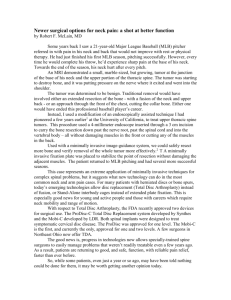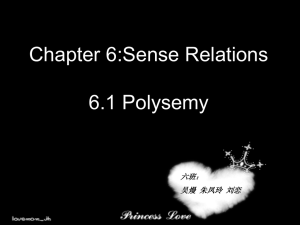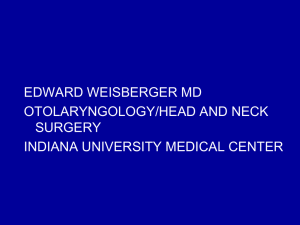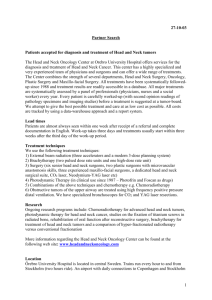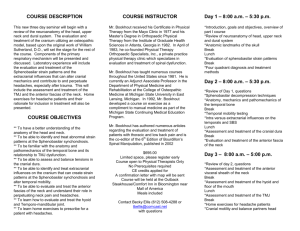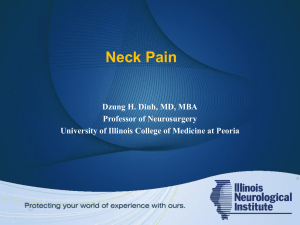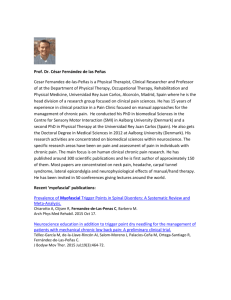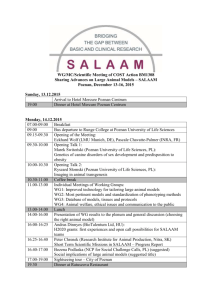Assessment of the application of manual myofascial techniques in
advertisement
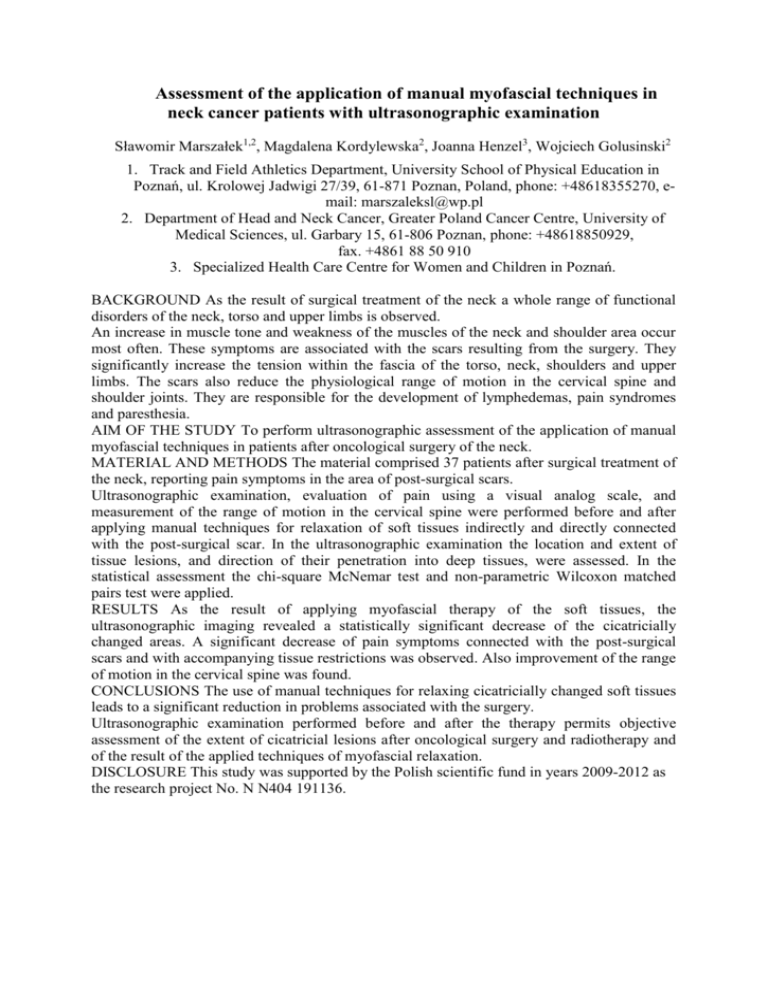
Assessment of the application of manual myofascial techniques in neck cancer patients with ultrasonographic examination Sławomir Marszałek1,2, Magdalena Kordylewska2, Joanna Henzel3, Wojciech Golusinski2 1. Track and Field Athletics Department, University School of Physical Education in Poznań, ul. Krolowej Jadwigi 27/39, 61-871 Poznan, Poland, phone: +48618355270, email: marszaleksl@wp.pl 2. Department of Head and Neck Cancer, Greater Poland Cancer Centre, University of Medical Sciences, ul. Garbary 15, 61-806 Poznan, phone: +48618850929, fax. +4861 88 50 910 3. Specialized Health Care Centre for Women and Children in Poznań. BACKGROUND As the result of surgical treatment of the neck a whole range of functional disorders of the neck, torso and upper limbs is observed. An increase in muscle tone and weakness of the muscles of the neck and shoulder area occur most often. These symptoms are associated with the scars resulting from the surgery. They significantly increase the tension within the fascia of the torso, neck, shoulders and upper limbs. The scars also reduce the physiological range of motion in the cervical spine and shoulder joints. They are responsible for the development of lymphedemas, pain syndromes and paresthesia. AIM OF THE STUDY To perform ultrasonographic assessment of the application of manual myofascial techniques in patients after oncological surgery of the neck. MATERIAL AND METHODS The material comprised 37 patients after surgical treatment of the neck, reporting pain symptoms in the area of post-surgical scars. Ultrasonographic examination, evaluation of pain using a visual analog scale, and measurement of the range of motion in the cervical spine were performed before and after applying manual techniques for relaxation of soft tissues indirectly and directly connected with the post-surgical scar. In the ultrasonographic examination the location and extent of tissue lesions, and direction of their penetration into deep tissues, were assessed. In the statistical assessment the chi-square McNemar test and non-parametric Wilcoxon matched pairs test were applied. RESULTS As the result of applying myofascial therapy of the soft tissues, the ultrasonographic imaging revealed a statistically significant decrease of the cicatricially changed areas. A significant decrease of pain symptoms connected with the post-surgical scars and with accompanying tissue restrictions was observed. Also improvement of the range of motion in the cervical spine was found. CONCLUSIONS The use of manual techniques for relaxing cicatricially changed soft tissues leads to a significant reduction in problems associated with the surgery. Ultrasonographic examination performed before and after the therapy permits objective assessment of the extent of cicatricial lesions after oncological surgery and radiotherapy and of the result of the applied techniques of myofascial relaxation. DISCLOSURE This study was supported by the Polish scientific fund in years 2009-2012 as the research project No. N N404 191136.

